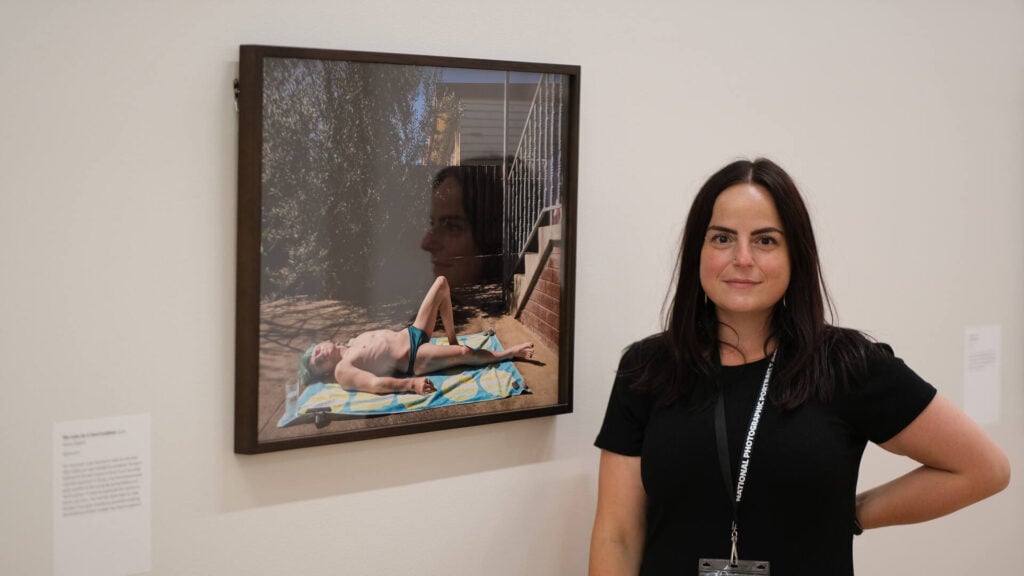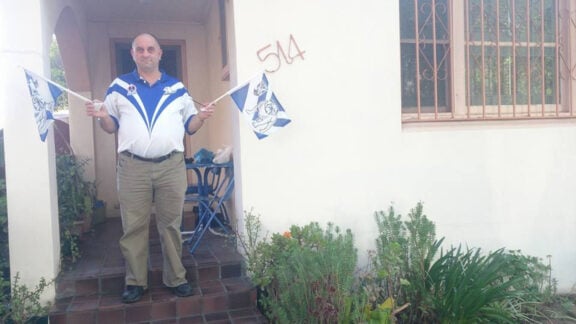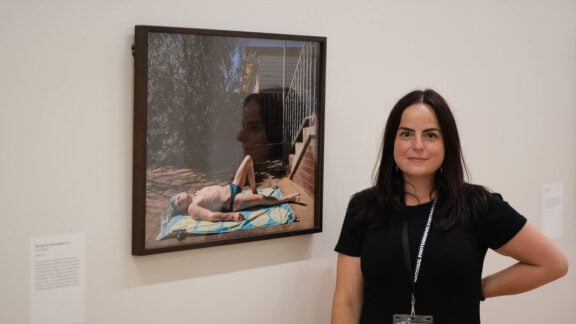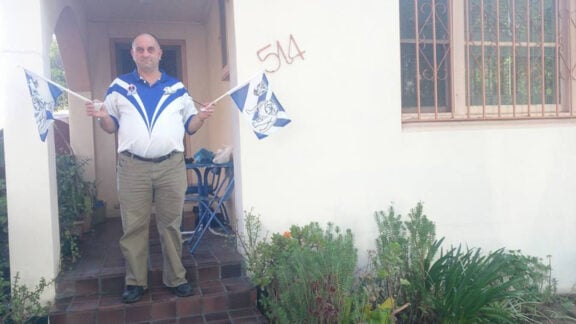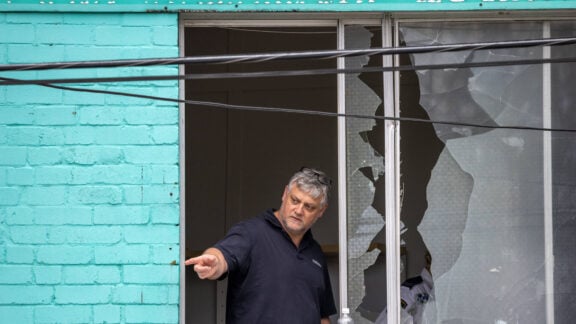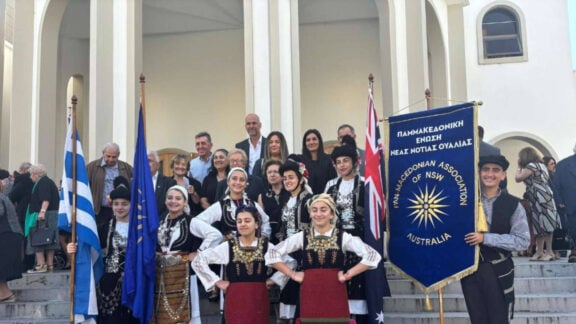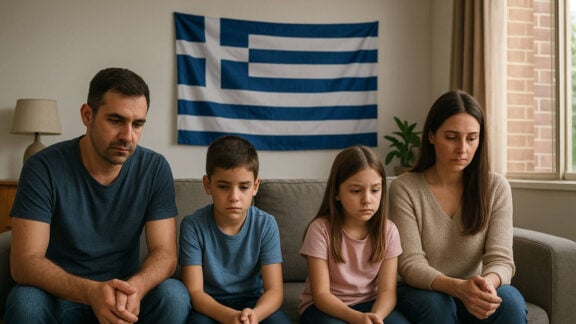On the early morning of 14 October 2022, the Maribyrnong River flooded, peaking at 4.22 metres and impacting hundreds of properties.
Two days later, Anna Kiparis took two photographs late in the night. The images became a visual record, never intended to become a series.
She was simply documenting the surroundings and repercussions of the Maribyrnong flood’s force, to capture its impact on the community.
‘Aftermath, Maribyrnong 2022’ would ultimately be shortlisted for the 2023 Footscray Art Prize.
Now three years later, Kiparis returned to the same flood affected areas to capture the community’s resilience.
Photographing those same residential structures today, ‘Aftermath, Maribyrnong Revisited’ shows Maribyrnong as a community who have come together in the face of adversity.
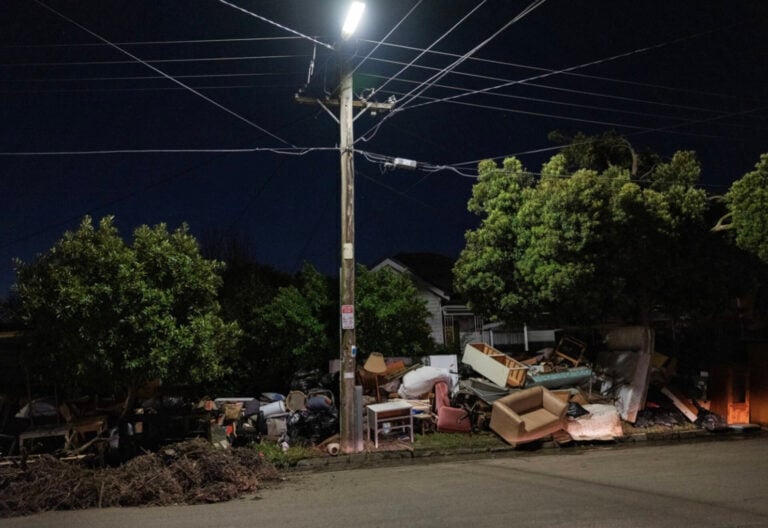
‘Floodworks’ explores the reverberation of those events three years on, to commemorate a time of uncertainty.
While ‘Aftermath’ was created with digital cameras, ‘Floodworks’ was created using black and white film, submerged into Maribyrnong river water and mud. Much like the experience of having your home and belongings flooded.
Kiparis tells Neos Kosmos that she was drawn back to the Maribyrnong community because she needed “to understand how people rebuild and reclaim their sense of place after such a disruptive event”.
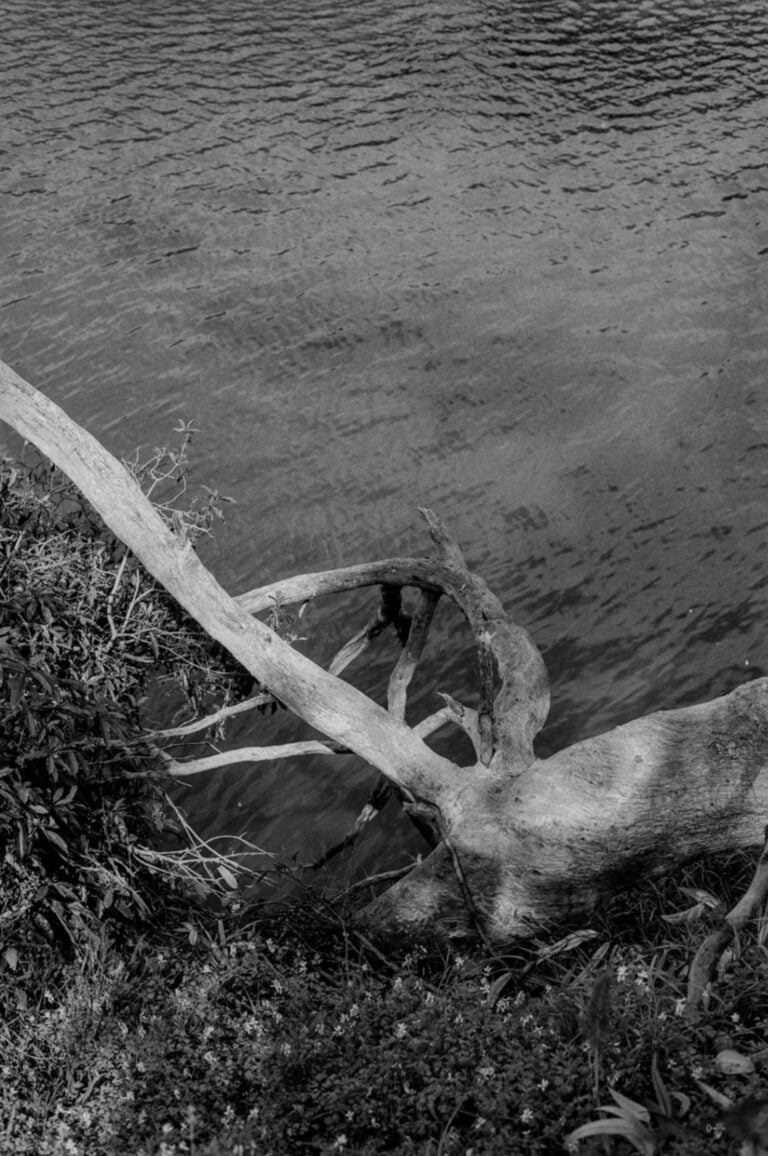
“When the floods first hit, the focus was naturally on the immediate damage, displacement and loss,” she says.
“However, I found that time brought more layers to the story. Stories of resilience and adaptation.
“I wanted this photographic work to reflect not just what was lost, but what was endured. I wanted to give space to the emotional and physical recovery that isn’t always visible to outsiders or captured in headlines.”
She says given that some time has passed, a reflective narrative can now be told that honours both the scarring and the strength of the Maribyrnong community.
Since the floods in 2022, Kiparis thinks the area carries both visible and invisible emotional shifts.
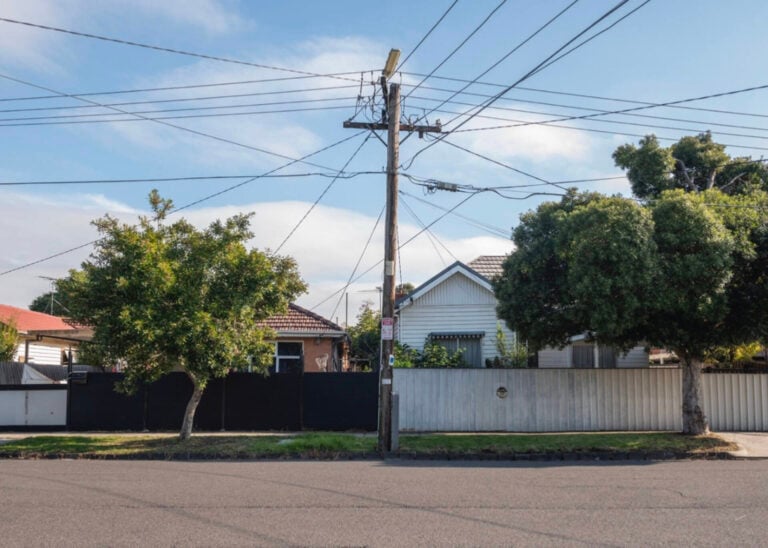
“There’s a sense of vulnerability. The shock of the disaster brought people together in ways that were raw and real,” she says.
“In the aftermath there remains a quiet strength and a kind of emotional resilience that only emerges through shared hardship.
“There’s also a lingering sense of unease, especially around trust in systems and in preparedness. But alongside that, there’s been a reclaiming of agency. People have taken ownership of their recovery, their narratives, and their spaces.”
Community groups are more active now and the floods give a lived experience for conversations about climate and infrastructure.
So she sees a community that’s more aware.
Kiparis hopes that people feel a sense of empathy when they see the photos, and to understand that recovery isn’t always fast but often slow.
She says beyond the flood — the photos explore resilience, belonging, and how communities respond and recover long after the headlines fade.
She wants viewers, especially those affected, to see their strength in both rebuilding homes and lives.
‘Aftermath, Maribyrnong Revisited’ and ‘Floodworks’, created with the support of Maribyrnong City Council Arts & Culture projects, are on display at the Maribyrnong Library until 23 October.
